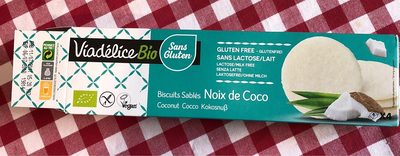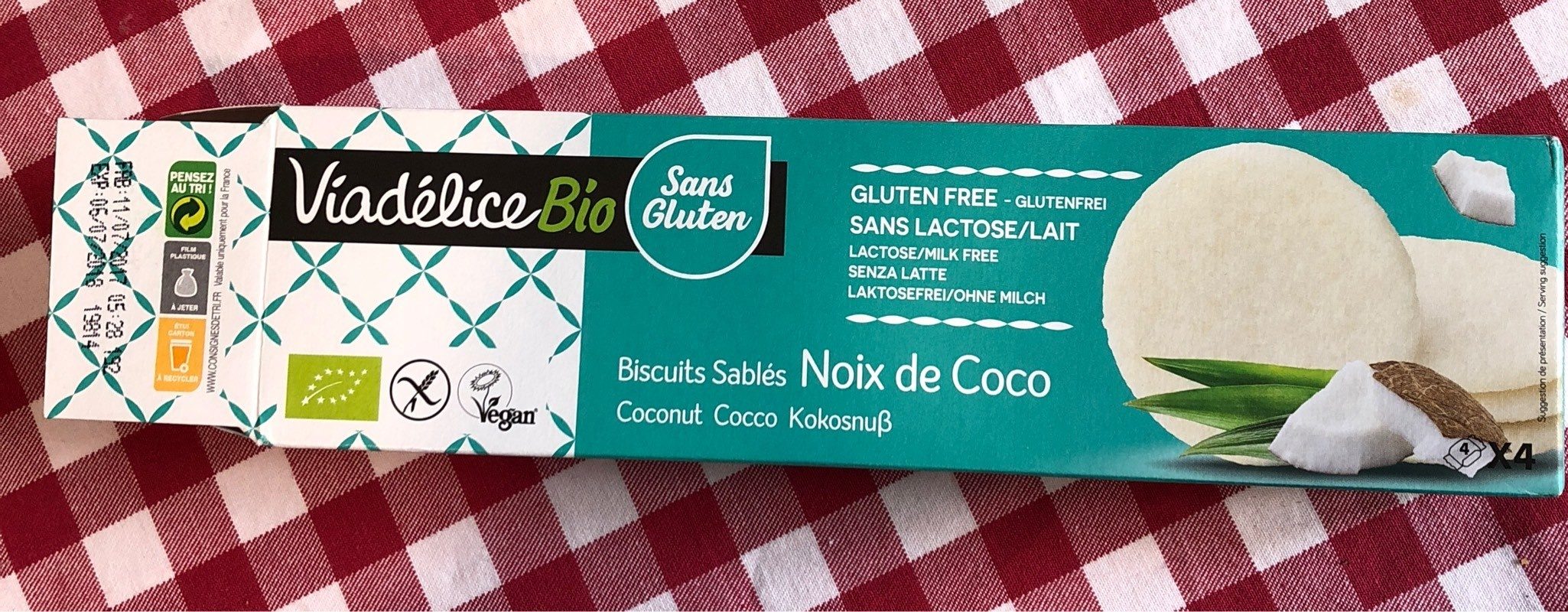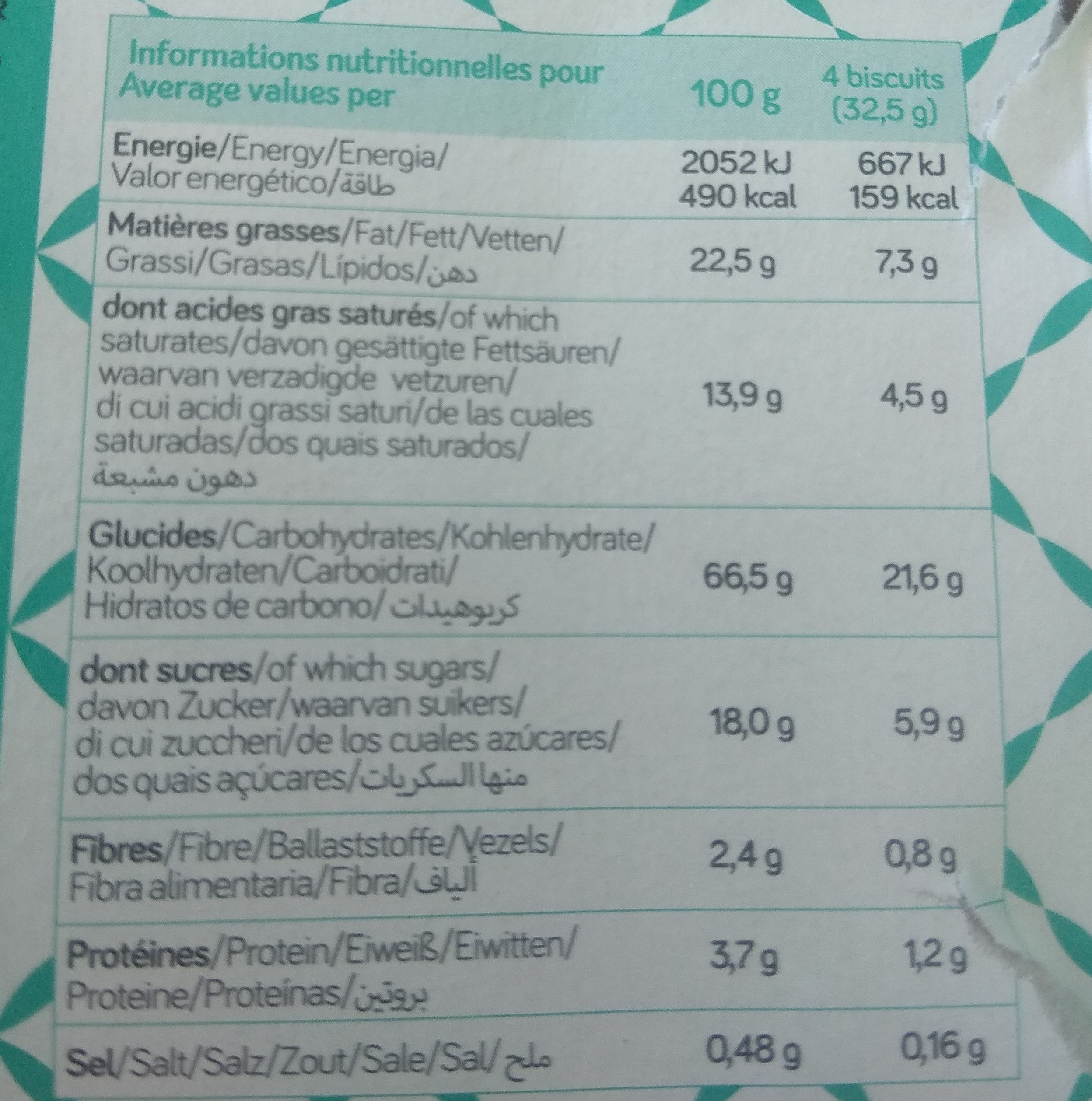Sablés noix de coco bio VIADELICE - 130g
This product page is not complete. You can help to complete it by editing it and adding more data from the photos we have, or by taking more photos using the app for Android or iPhone/iPad. Thank you!
×
Barcode: 3760092217201 (EAN / EAN-13)
Quantity: 130g
Packaging: fr:Emballé
Brands: VIADELICE
Categories: Snacks, Sweet snacks, Biscuits and cakes, Biscuits, Shortbread cookies, Shortbread cookie with coconut, Sablés à la noix de coco
Labels, certifications, awards:
No gluten, Organic, Vegetarian, EU Organic, Vegan, No lactose, The Vegan Society, AB Agriculture Biologique


Countries where sold: France
Matching with your preferences
Environment
Carbon footprint
Packaging
Transportation
Threatened species
Labels
Report a problem
Data sources
Product added on by kiliweb
Last edit of product page on by roboto-app.
Product page also edited by autorotate-bot, charlesnepote, openfoodfacts-contributors, quitodelavega, teolemon, worldtest, yuka.WXBJdVQ2a3orL2dvdU1GbHd6ZndwdFZFOTdTcFRVaUZOZTBZSVE9PQ, yuka.ZjdvRExiOEhwOUlKaE5vbXB4UE85ZWh4bW9XWlhGUHNGTXdLSVE9PQ.












